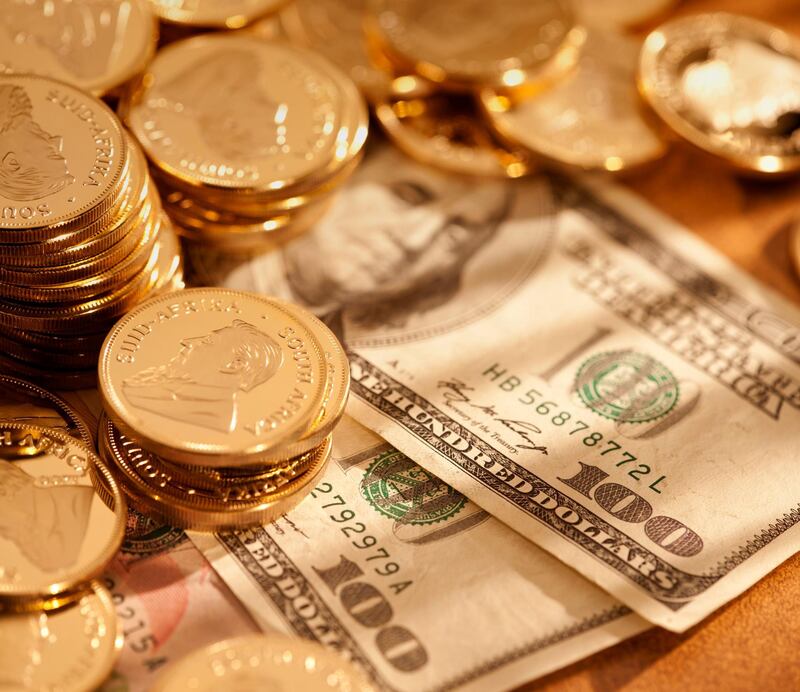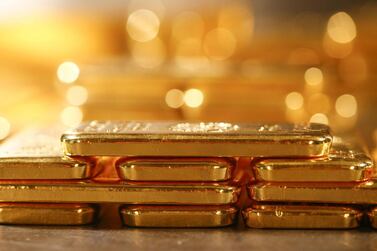The US dollar is back to highs not seen in three years, and that means the dollar-linked dirham is also riding high. So, where will the dollar go next?
In the short term the greenback is set to remain strong and even strengthen further against other currencies as stock markets correct again to better reflect the true economic shock of the coronavirus.
But longer-term excessive stimulus measures and outright money printing will diminish the currency's actual buying power. This will be a speeded-up version of the shrinking of the purchasing power of the dollar by inflation that has been happening ever since Congress first issued the currency in 1775.
When US stock markets first reacted to the global economic impact of coronavirus in March, they lost around 35 per cent of their value. That sounds huge, but remember that as late as February 12 US stocks were trading at their highest valuation in history.
Stock market crashes have the reverse effect on the US dollar. Shares are liquidated in exchange for dollars; this produces an increased demand for the greenback, and so its value, or exchange rate, goes up.
Liquid cash is what you want in a recession as the value of everything will tend to fall, and so cash becomes more valuable in terms of what it will buy. Hence the adage: cash is king.
Therefore, the most important question to determine the immediate outlook for the US dollar is: where are financial markets heading?
The massacre of the oil price last week – with negative futures prices for the first time in history – is flagging up a deep recession in the global economy. The supply of oil now massively exceeds current demand levels and there is nowhere left to store it. Some sellers literally have to pay buyers to take delivery.
If we look at US stock markets the picture is rather different. There has been a 50 per cent rally off of the low in share prices reached in the March crash; this is a typical dead cat bounce from a big sell-off as bargain hunters move in.
Overvalued US stock markets, whose value topped out at 150 per cent of gross domestic product, have recovered from a fall to 119 per cent to 131 per cent today. This compares to "fair value" of 50-75 per cent for what is known as the "Buffett Indicator" – Warren Buffett’s favourite valuation yardstick.
While the International Monetary Fund says this will be the worst downturn for the global economy since the 1930s, Goldman Sachs expects a recession four times as bad as 2008-09. Allianz economic adviser Mohamed El Erian, meanwhile, forecasts a 14 per cent contraction for the US economy this year.
America has 26 million people filing jobless claims compared to the nine million jobs lost during the global financial crisis.
Given this dire economic background it would appear only reasonable to anticipate further weakness for US stock markets. They are currently still significantly overvalued and priced for relatively good times ahead; although markets could chop sidewards for a while before going lower.
In dollar terms, that dip would translate into more strength making it the global currency of choice in a crisis, as we saw back in March.
However, assuming a vaccine can be found and there are no second or third waves of the virus, there may be a more rapid economic recovery than presently forecast.
Then it is arguable that the Fed and the US government are overdoing the stimulus, now more than $8 trillion, or equivalent to half the GDP of the world’s largest economy.
If this stimulus is not quickly withdrawn, or swallowed up by the deflationary effect of this economic shock, then its impact could well be inflationary. This would mean an acceleration of the long-term decline in the purchasing power of the dollar, particularly when measured in a currency that cannot be printed like gold.
How the dollar will perform relative to other currencies is a moot point. The Fed’s lowering of US interest rates to zero last month hardly had any effect. But Asian currencies, such as China's renminbi, may be poised to advance because more aggressive virus containment policies will allow a faster revival of their economies.
The British pound is hamstrung by the almost forgotten Brexit due at the end of the year. The IMF is pleading with the UK to delay what will be another disruption to the global economy.
If the dollar is to lose ground to any major competing paper currency, then only the euro is big enough to be a serious competitor. Spain and Italy have been hard hit by Covid-19, but Germany and Austria have achieved much better containment and reopened parts of their economies last week.
That said the world's oldest currency is making a comeback, with gold not far off its previous all-time high of $1,923 per ounce.
The Bank of America, the second largest bank in the world by total assets, forecasts the yellow metal will exceed $3,000 per ounce within the next 18 months.
With demand for physical precious metals exploding globally this year, monetary metals gold and silver look set to be the US dollar’s only near-term challenger.
Peter Cooper has been writing about Gulf finance for more than 20 years







